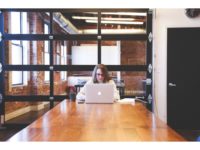March is Women’s History Month and we wanted to take the time to spotlight some women in the AEC industry.
Building Enclosure was joined by a handful of leading AEC industry females to speak on issues women have faced in the construction fields and how the younger generation can continue to break down barriers.
Read on to hear what some of their biggest hurtles have been. We look forward to seeing what the future of architecture looks like with these women at the helm.
Mavis Wiggins
Managing Executive and Studio Creative Director
TPG Architecture
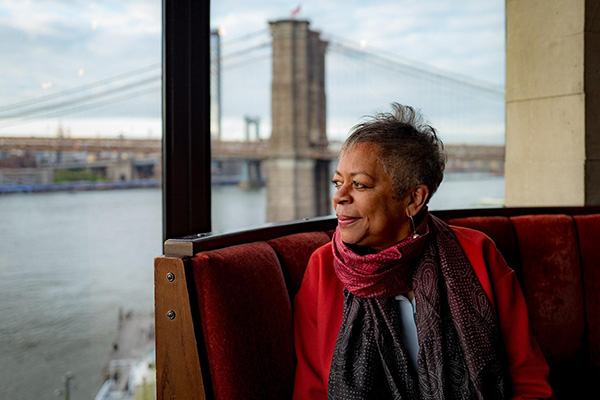 Although I had a love for visual arts as a child, my passion for designing spaces did not emerge until I started my studies. I became fascinated with the transformative power of design on interiors and saw parallels between fine art and interior architecture. As an interior architect, I use my skills to create positive experiences for people in various spaces, from functional workspaces to inviting public areas. In many ways, I feel that the design profession found me. It was not something that I had planned on pursuing initially, but as I explored different areas of design, I found myself increasingly drawn to the field of interior architecture. Today, I am grateful for the opportunity to combine my love of visual arts with my passion for creating beautiful and functional spaces that enhance people's lives.
Although I had a love for visual arts as a child, my passion for designing spaces did not emerge until I started my studies. I became fascinated with the transformative power of design on interiors and saw parallels between fine art and interior architecture. As an interior architect, I use my skills to create positive experiences for people in various spaces, from functional workspaces to inviting public areas. In many ways, I feel that the design profession found me. It was not something that I had planned on pursuing initially, but as I explored different areas of design, I found myself increasingly drawn to the field of interior architecture. Today, I am grateful for the opportunity to combine my love of visual arts with my passion for creating beautiful and functional spaces that enhance people's lives.
My passion for designing spaces is inspired by my early interest in the visual arts, particularly photography and fine art. Additionally, my upbringing in California during the 1960s exposed me to multicultural experiences which has deeply influenced my design philosophy. I am motivated by the desire to create timeless spaces that are specific to their location and purpose, incorporating geographical, architectural, cultural, and organizational touchstones into each design. Ultimately, I am inspired to design spaces that not only look beautiful but also foster a sense of connection and serve a meaningful purpose for those who use them.
While progress has been made in recent years, there are still some areas of the architecture and design industry where women face challenges. For example, commercial architecture and specialized design fields like industrial or product design can be more difficult for women to break into due to historical perceptions and biases. Leadership roles in the industry may also be harder for women to attain. However, I find it inspiring to see many successful women breaking through these barriers and serving as advocates for greater gender equality and diversity in the industry.
Female designers bring a unique lens and perspective that strengthens our designs and creates better spaces for everyone. With more female voices at the table, we can create truly impactful and inclusive spaces for the best experiences. Diversity is what makes this country great, and we should welcome individuals from all walks of life to bring their fresh perspectives and ideas.
The future of architecture is an equal future with everyone’s voice heard and room for everyone at the design table. This requires ongoing conversations about gender and inequality until we achieve full representation in the industry. By having these conversations, we are breaking down barriers and creating opportunities for female designers, our clients, and the communities we impact with our work. As we bring more diverse perspectives to the table, we can unleash the true potential of our designs and create stronger and more inclusive communities.
Lauren Gardner
Director, Creative + Strategy
Spectorgroup
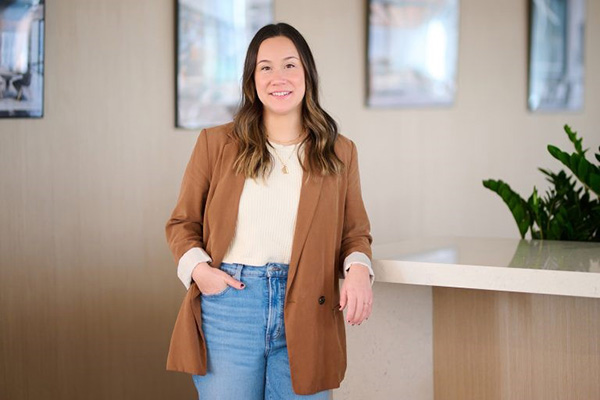 I graduated from the University of Florida with a Bachelor of Design in Architecture in 2008 during the economic crisis, which in a lot of ways, shaped my non-linear career path. I started in high-end residential right out of school, where I immediately worked on $15+ million residences in the Hamptons and townhouses in Manhattan. We were a small team, and I had an amazing mentor who allowed me to sink or swim on my own project. I learned quickly how to hold my own, ask questions, collaborate with engineers and consultants, and think holistically to solve problems. I think those skills stuck with me and set the foundation for how I approached all my roles moving forward.
I graduated from the University of Florida with a Bachelor of Design in Architecture in 2008 during the economic crisis, which in a lot of ways, shaped my non-linear career path. I started in high-end residential right out of school, where I immediately worked on $15+ million residences in the Hamptons and townhouses in Manhattan. We were a small team, and I had an amazing mentor who allowed me to sink or swim on my own project. I learned quickly how to hold my own, ask questions, collaborate with engineers and consultants, and think holistically to solve problems. I think those skills stuck with me and set the foundation for how I approached all my roles moving forward.
What inspires you to design?
The ability to drive positive change through design. I gravitated towards workplace strategy and corporate interiors because I was always intrigued with human behavior and how spaces can create meaningful experiences.
I enjoy learning about organizations, how people work and interact, and creating workplace strategies that foster connection, tell their brand story, and support the future of their business.
The architecture and the commercial real estate industry are still very male-dominated. At times, being the only young female in the room, it takes confidence to demand respect and attention in a meeting. I think there is a tendency to marginalize younger voices and often younger women. There were times when I could tell my opinion didn’t hold as much ground, which can be frustrating. From a relationship-building and networking standpoint, I found that to be challenging at times.
There is still a considerable difference between the number of women in the industry and those in leadership positions in firms. I was lucky throughout my career to have been surrounded by strong women leaders, and I think it is essential that we take our experiences and offer training, mentoring, and the right tools to promote confidence and career growth in the younger generations.
I try not to differentiate between males and females in design or other positions. I think it comes down to the individual, not demographics. A good designer is a good designer and should be a partner in the process who listens, understands, and can take information and conceptualize it into a solution that not only pushes boundaries but solves a problem and supports positive change.
Mariah Kiersey
Ankrom Moisan Architects
Managing Principal
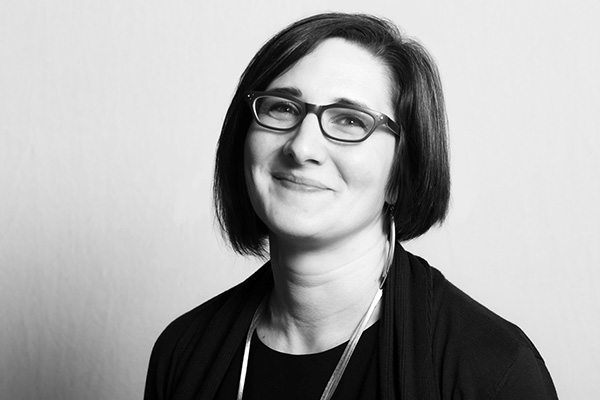 I graduated with my architecture degree after 9/11 and there were not a lot of design jobs to be had. I was lucky to get an interview, which happened to be with a male architect, hiring for a woman interior designer. During the interview, it was stated that because I was a girl, I should be able to do interior design. I was not trained in it but was desperate for a job, so I of course said I could. I was going to do my best to try to learn interior design on the fly. Once hired, they quickly realized that I was not able to, but I was lucky to have them as a mentor who saw my potential and did their best to train me. As a young professional woman starting my career, I found it insulting to be called a girl and for him to assume that I could select finishes to create a full interior palette scheme based solely on my gender, not any education or work experience. It is also an insult to the interior design discipline.
I graduated with my architecture degree after 9/11 and there were not a lot of design jobs to be had. I was lucky to get an interview, which happened to be with a male architect, hiring for a woman interior designer. During the interview, it was stated that because I was a girl, I should be able to do interior design. I was not trained in it but was desperate for a job, so I of course said I could. I was going to do my best to try to learn interior design on the fly. Once hired, they quickly realized that I was not able to, but I was lucky to have them as a mentor who saw my potential and did their best to train me. As a young professional woman starting my career, I found it insulting to be called a girl and for him to assume that I could select finishes to create a full interior palette scheme based solely on my gender, not any education or work experience. It is also an insult to the interior design discipline.
I have also chosen to leave my graying hair when on-site with contractors, or in a room with clients as it gives me the credibility that I have been around for a while. I have been listening to more in the last few years, than prior to letting my gray hairs fly, even though I was covering the same material and pushing back on the same construction administration items. I do not like aging. Who does? But to make my job easier, if I have to look older than I am, so be it.
I have also felt that women architects are held to a different standard when it comes to how we dress and present ourselves. When I go without makeup, I am told I look tired or asked what is wrong. I feel pressure from colleagues and clients to wear fancy clothes, wear coordinating jewelry, have a designer handbag, and wear makeup, so we look like the magazine. Especially at client meetings and interviews, where in comparison to my male counterparts who can have a 5 o’clock shadow, jeans, a t-shirt, and sneakers, and dress their look up with a sport coat, can pull it off as professional. If I tried that, it would not come across as professional.
There are very few women leaders that blazed the trail before for me, so it was hard to find a woman architect to be inspired by. I have worked with so few women architects, and only one woman, in the three firms I have worked for, was an architect in leadership. I was fortunate to have supportive male architects around me and did not experience the sexist remarks that I have been told over the years from my peers. I have not had to work as hard as the generations before me to carve my way, and I recognize that, but there still is a push to be had for the generation behind me to catch up for genders to be balanced.
Women experience spaces differently and women make up half the world's population. As women architects, we have to address half the population because when our voices are not heard a big part of the population will remain underrepresented. For example, men do not want me to design their urinals, as I have never used them. I will ask for their opinion and get their assistance when I need to. It was frustrating to see men designing mothers’ rooms without asking what pumping working mothers needed in that room. I could not sit by, and had to interject, as I knew firsthand the challenges a working, pumping mother face and what is needed in that room. Women also think through things like open stairs and what would be seen from the seating below if someone was wearing a dress. That has been embarrassing when I found myself in that situation. Design teams need to have a variety of ages, races, and genders so that when laying out spaces, we can do our best to make sure all perspectives can be represented.
Beth Crutchfield
Lead Electrical Engineer/Principal
RMF Engineering Inc
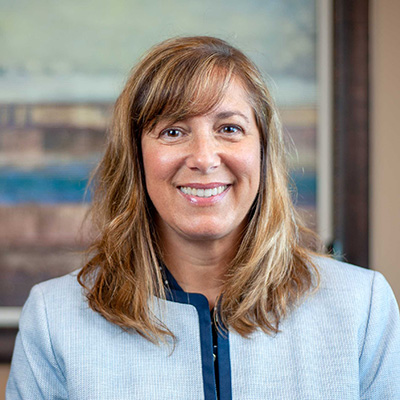 Coming out of a recession when I graduated made it hard to find work, but my dad had a friend who worked for RMF. I am happy to have stumbled upon this industry, because it’s more than I ever thought my career as an electrical engineer could be.
Coming out of a recession when I graduated made it hard to find work, but my dad had a friend who worked for RMF. I am happy to have stumbled upon this industry, because it’s more than I ever thought my career as an electrical engineer could be.
I work with an outstanding architect who has a certain style that amazes me every time she talks. She is great at getting the information she needs from her clients to make sure the spaces and buildings they are getting through her design will suit their needs now and in the future. She makes sure they will be 100% satisfied at Day 1 and Day 1 million.
I have been lucky to work for an employer who treats me as an equal, so there have not been any challenges there. I faced challenges earlier, however, in my career working on the construction side, which has traditionally been male dominated. Overall, the biggest challenge was a lack of trust during the construction phase of a project that I am qualified being a female.
My experience has been that it’s a field that likes the diversity, creativity, and detailed nature that women bring to the workplace, so I haven't seen much of this. As women, bring a different perspective with regards to making things not only functional from an engineering perspective, but we are also creative with real world solutions.
Ashley Bradley
Vice President
The Bradley Projects and Certified Construction Services
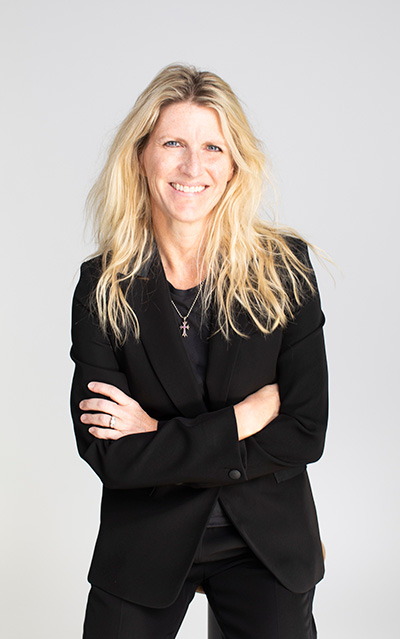 The short story of how I got into the industry is that I married an architect. At the time, my husband Jared was working for an architecture firm and was rather disenchanted with the role an architect has in the big picture of development. I felt compelled to take on a new challenge. I eventually left my position as the Science Writer for the San Diego Zoo to help his business grow into the vertically integrated development company (architecture, construction, and real estate development) we run today.
The short story of how I got into the industry is that I married an architect. At the time, my husband Jared was working for an architecture firm and was rather disenchanted with the role an architect has in the big picture of development. I felt compelled to take on a new challenge. I eventually left my position as the Science Writer for the San Diego Zoo to help his business grow into the vertically integrated development company (architecture, construction, and real estate development) we run today.
I handle the fun stuff, contracts, billing, and lots of operational details, so day-to-day, I’m not involved in the technical side of design. However, being surrounded by designers drafting around us, I can’t help but respond when I see great work or projects in the community that seem less thought through. The projects we’re working on lean toward contemporary with simple material palates. I’m often drawn to a minimalist aesthetic because it takes enormous restraint to keep it simple. My background in writing and editing helps me pare things down to what’s really necessary.
Once, after asking a development partner for some financial information, he called my business partner and husband Jared to talk through the request, saying, “I’m a man’s man.” Soon after we moved to Nashville, we had a male developer client for whom we were building a project that would never respond to me directly when I’d follow up on late payments.
Women are not as represented in construction, and when they are, it is primarily in the office. There are a few women on the drywall crews on our jobsites, but construction and architecture are still male heavy.
All that said, there are so many hashtags on Instagram with #FemaleBoss, #BossBitch, #WomenPower, and every iteration of that, which I feel is such a negative way to empower women in certain fields. I work with primarily men every day, so it is in my vested interest not to be perceived as different or define myself as categorically separate. By branding yourself in that way inherently creates the dynamic that there's a difference between men and women working together, or in positions of power, a difference exists. That said, there's much less room for error and it’s easier to lose trust if you aren't actually one of the boys. I couldn't imagine having a routine “Outfit of the Day” post, or some other self-focused life lesson from me and expecting the office guys to take me seriously as a partner and CFO.
Female designers bring a counterpoint to the male-dominated perspective. I can’t speak for all women designers, but I come to any project with the perspective that it can be edited down to its simpler, calmer and essential form.
Jessica Anderson
Commercial/ Residential Studio Director
CallisonRTKL
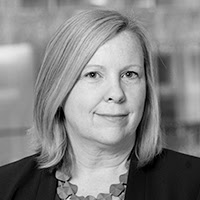 I always knew I wanted to be an architect. At an early age, I was drawing plans and sections of a house based on connecting the rooms depicted in the glossy images of Architectural Digest and of course, building many buildings out of blocks and legos. During college, I was a summer intern at a local architectural firm in Louisville, Ky. I handwrote text on drawings and ran blueprints for the senior architects.
I always knew I wanted to be an architect. At an early age, I was drawing plans and sections of a house based on connecting the rooms depicted in the glossy images of Architectural Digest and of course, building many buildings out of blocks and legos. During college, I was a summer intern at a local architectural firm in Louisville, Ky. I handwrote text on drawings and ran blueprints for the senior architects.
About 10 years ago, I would have been the only woman around a large conference room table at a contract negotiation for a prominent high-rise project with a developer, architect, and consultants. Now, that landscape has changed and there are many more women in the room.
A few times early on in my career construction jobsite contractors called me ‘Ma’am’ during a meeting. When talking with men in the same room they did not use the ‘Mr.’ salutation. I have had to correct them and reiterate that I am just another person on the team.
I think at this point it is still harder for women to be at the head of a design firm. There are trailblazers but there still needs to be more equality at the very top of leadership organizations. There is a lot of talk at companies about equality and diversity but needs to be more action especially with women in top positions.
Female designers bring a different perspective on spaces, providing more subtle, and refined designs. They do not need to be “starchitects” or build the biggest, tallest buildings, but rather design spaces that focus on interior detailing, materiality, community engagement, and health and wellness.
The future of architecture is to provide flexible, sustainable, and technologically integrated design solutions, which improve people’s lives. I think the pandemic has made people acutely aware of the quality of the spaces they live, work, and play in. People will be demanding better, more inspiring spaces which connect them to other people, experiences, and to nature that work and grow with them through the ages. I am excited to be a part of creating these places for the future.
Mary Dickinson
Director of Sustainability
Perkins&Will
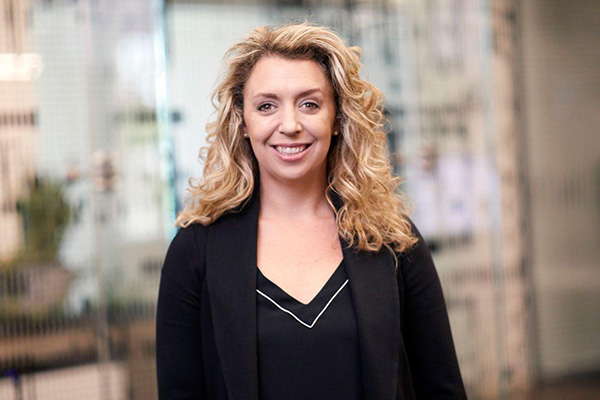 My interest in design started in my childhood home. My parents were engineers and growing up, my family never bought a new house. We either renovated or built and designed a new house. Working with my family on renovation projects instilled in me from a young age the importance of reuse. Later on, I was on a path for either Veterinary school or interior design, and ultimately chose to stick with interior design.
My interest in design started in my childhood home. My parents were engineers and growing up, my family never bought a new house. We either renovated or built and designed a new house. Working with my family on renovation projects instilled in me from a young age the importance of reuse. Later on, I was on a path for either Veterinary school or interior design, and ultimately chose to stick with interior design.
I’m motivated by design that is responsive to its environment. For me, design is intentional. There must be a reason for it, not just from an aesthetic standpoint. We must also consider design from a performance standpoint and for how spaces impact their occupants. A building can provoke a holistic response from a person, giving them a sense of wellbeing and delight. In turn, a building can also help the environment, and even rehabilitate the past.
As a Texan, I feel particularly responsible for increasing the material health of the built environment. According to a statistic from the Environmental Protection Agency, ”Nearly 80% percent of all the hazardous waste generated in 2019 came from Texas, Louisiana, Mississippi, Ohio and Kansas.” The building industry produces far more chemicals that the earth can tolerate in a healthy, sustainable way. Design is an actionable response that we can take to rectify this situation.
Robin Guenther is a personal mentor of mine at Perkins&Will and she inspires me to reach for the big goals. Robin has served as the global chair for Perkins&Will’s health practice, and helps us think deeply about the demand and waste involved in healthcare facilities. Hospitals will never go away, so how can we make them better? These facilities are built to help people, but often they are major players in a harmful environment. If we can create solutions for sustainable design in the healthcare sector, we will walk away with solutions for a lot of other industries as well.
Gabrielle Bullock, Perkins&Will’s Director of Global Diversity, has helped me reframe the way I talk about diversity and inclusion, what those definitions are, and how we need to respond as designers. Most importantly, she has showed me how much more impactful design is when we involve the community in our work.
The field has advanced significantly from when I started working. I think the hardest part for women now is combating burnout, especially for women who are also mothers. I notice the construction field still lacks female representation. I’m realizing it’s not so much a question of breaking in, but staying in. For women who have children, it can often feel like you have to give up something in order to be more a part of another. But the big thing I learned early on was to sharpen my focus—if I tried to take everything on, I couldn’t get anything done. We need to do more to encourage and mentor more women to stay in this field for the long haul, because their passions for the built world can and will have a positive impact.


.jpg?height=200&t=1646159763&width=200)
